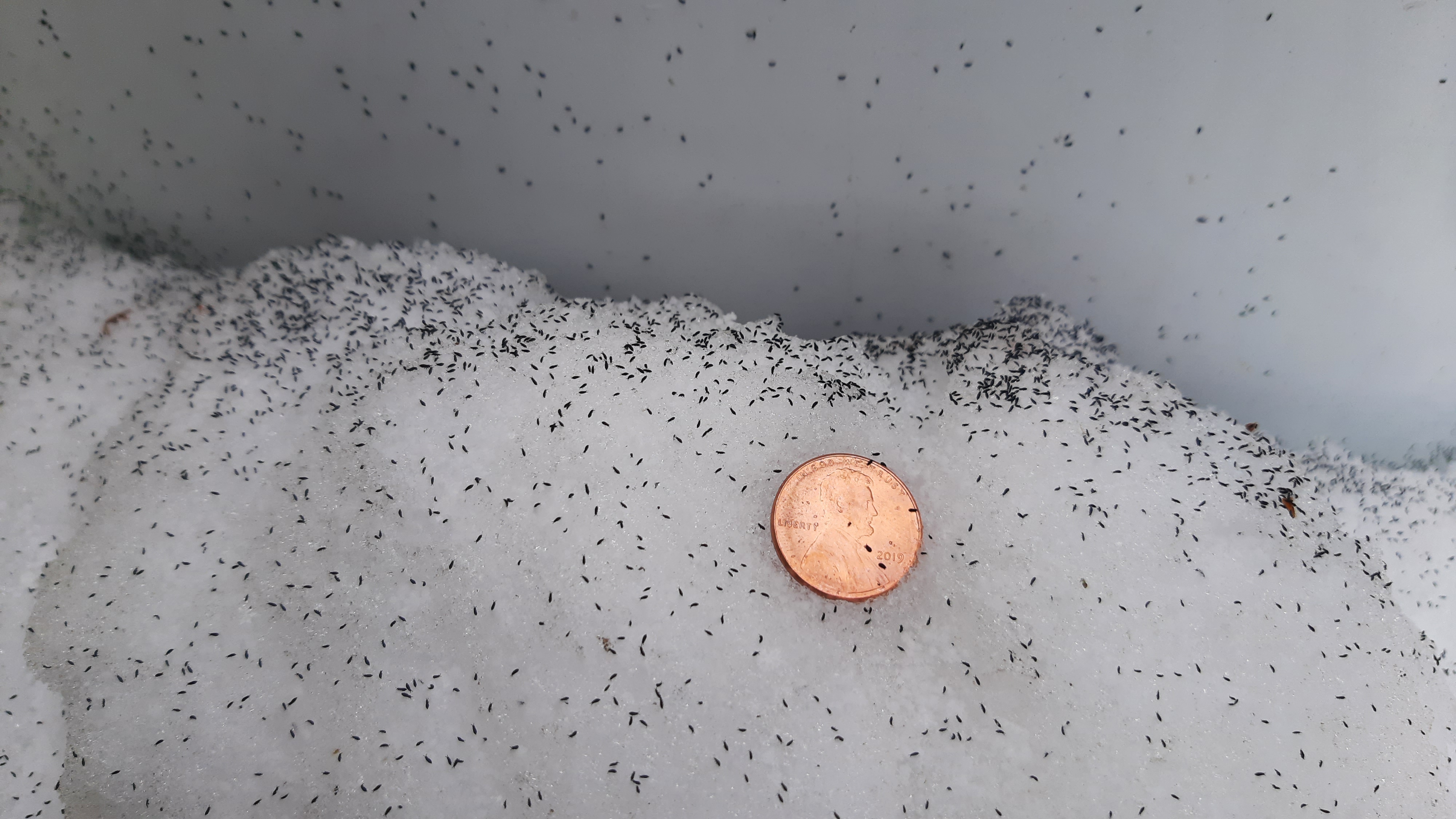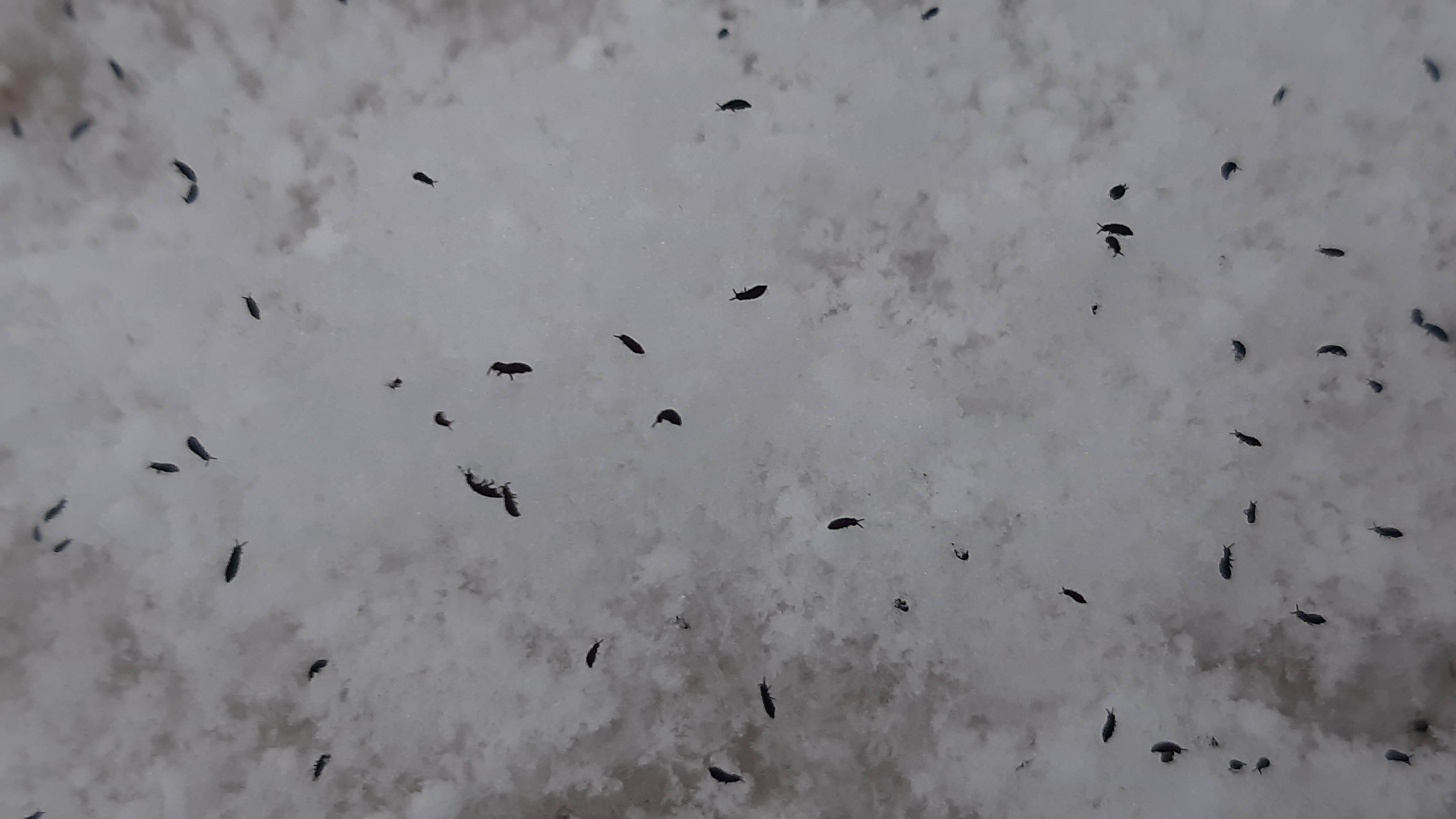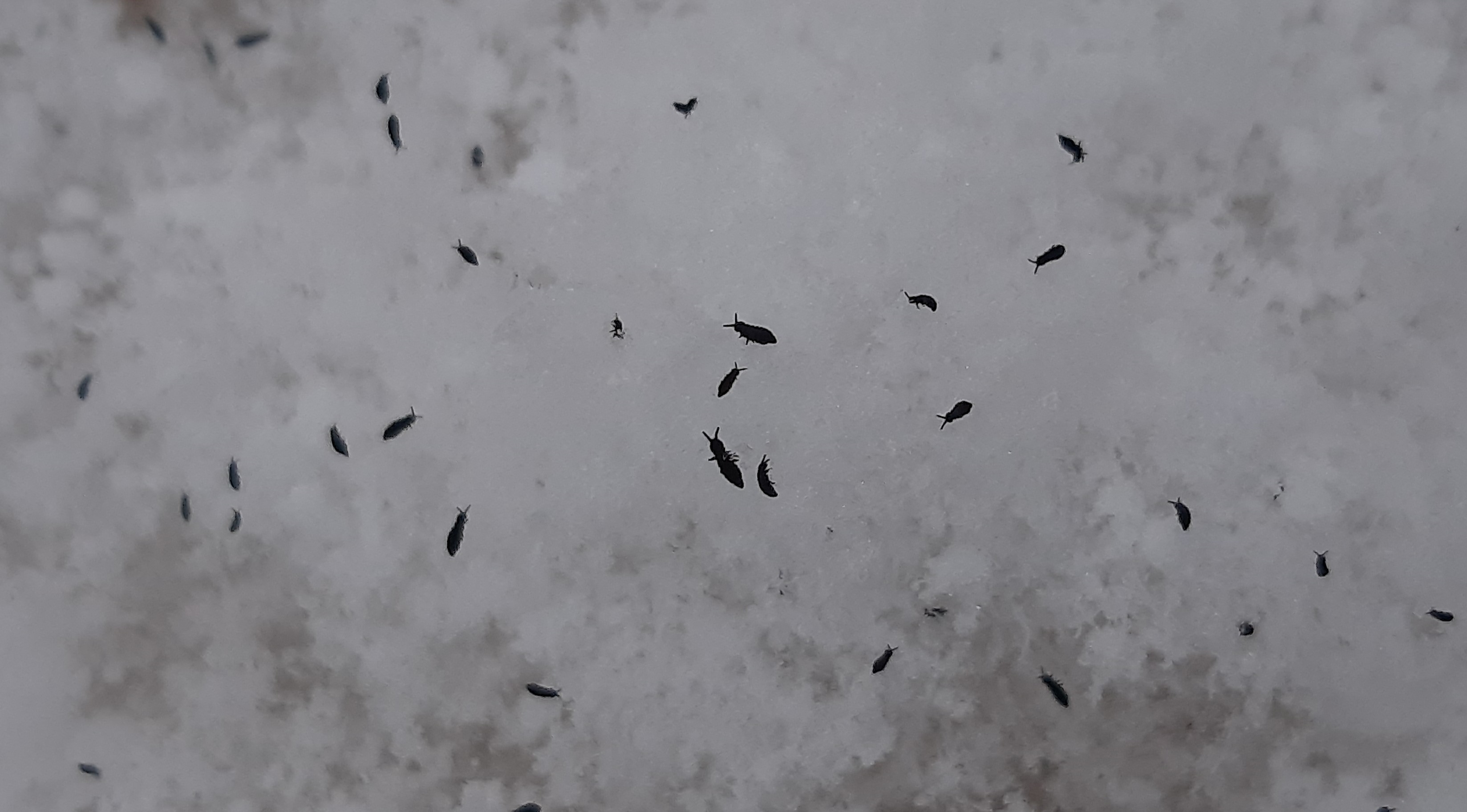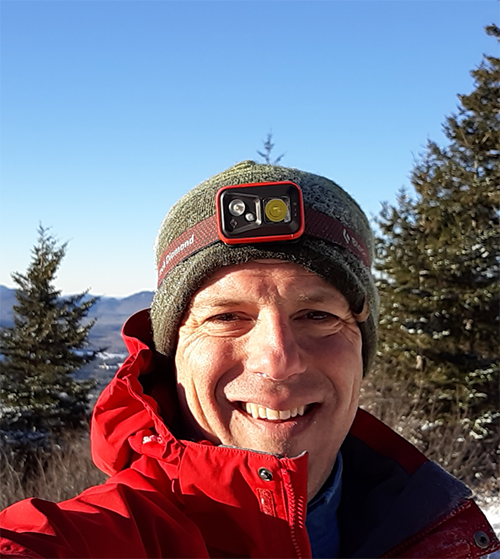
A Flea That Won't Bite
By Justin Levine - Adirondack Council Communications Associate
Monday, March 13, 2023
With spring, and consequently, black fly season, just around the corner, it’s sometimes nice to bask in the winter months when biting insects aren’t a worry. And on some of these warm days, you may find an Adirondack Park creature with a menacing name, but no bark to its bite.

The snow flea (Hypogastrura harveyi or Hypogastrura nivicola) can be seen when the days start to get longer, often in large groups that cover the snow and jump about. And even though I was talking about black flies, mosquitoes, and no-see-ums above, snow fleas are more closely related to crustaceans than insects.
Snow Fleas
Snow fleas, or springtails, are a wide-spread, six-legged being found throughout much of North America. What makes them so unique and interesting is that they are often only seen when there is snow on the ground, where their dark bodies stand out against the white of the snow.
They look and act similar to regular fleas, being about the same size (1/16th of an inch) and jumping fairly large distances. Snow fleas don’t bite the way actual fleas do, but the other major difference is that fleas jump like grasshoppers, with large back legs. Snow fleas actually use their tails to fling themselves into the air, which is why they also go by the common name of springtails.

“This is an abundant species in our forest, in the winter and fore part of spring,” Asa Finch wrote in his 1847 book Winter Insects of Eastern New York. “At any time in the winter, whenever a few days of mild weather occur, the surface of the snow, often, over whole acres of woodland, may be found sprinkled more or less thickly with these minute fleas, looking, at first sight, as though gunpowder had been there scattered. Hollows and holes in the snow, out of which the insects are unable to throw themselves readily, are often black with the multitudes which here become imprisoned.”
In 1902, Justus Watson Folsom classified snow fleas into three species, and further scientific research has placed them with other hexapods, which are related to crustaceans.
Antifreeze
The size of individual snow fleas may make them seem insignificant, but in addition to their local ecological role, snow fleas are also on the cutting edge of scientific research.
While generations of Adirondack insects, plants, and mammals essentially hibernate all winter, snow fleas are able to be active for one specific reason: they’re full of antifreeze. According to studies, snow fleas have proteins that inhibit ice crystal growth, which could have implications on research for organ transplants for humans as well as food preservation. Their scientific significance is just one more reason why preserving the ecological integrity of the Adirondack Park, for the large and small, is so important.
Their Role
When not captivating folks in the winter, snow fleas play an important ecological role by eating and helping to break down organic matter such as leaves and fungi. And while we may be talking about them because it’s winter, they are active in Adirondack soils all summer long, just so small that we rarely notice them.

After the snow melts, snow fleas mate, and a new life cycle begins. Snow fleas molt their exoskeleton several times during the warmer months until they’re full-grown adults. Snow fleas remain active in their habitat all year, and one reason they are seen on late winter days is because they are hungry and looking for more food.
“They eat leaf litter, live plant material, algae, fungi, [and] other microorganisms like protozoans and nematodes,” the Vermont Agency of Agriculture Food and Markets says. “In the food chain, they are both predators and prey.”
To get more Adirondack-related content, don't forget to support the work of the Adirondack Council, take action on Adirondack issues, and find us anywhere you are on the web. The Adirondack Council is also a proud community partner of the Leave No Trace Center for Outdoor Ethics.

Justin Levine joined the Council staff in 2021 as the Communications and Outreach Assistant. He previously worked as a regional marketing manager for the Regional Office of Sustainable Tourism and was an award-winning journalist and photographer for the Adirondack Daily Enterprise and Lake Placid News. Since graduating from Paul Smith’s College in 2004, Justin has worked in the environmental field in various roles in both the Adirondacks and Florida. When not working, Justin loves spending time with his family, running, and doing all the outdoor things the Park has to offer.




